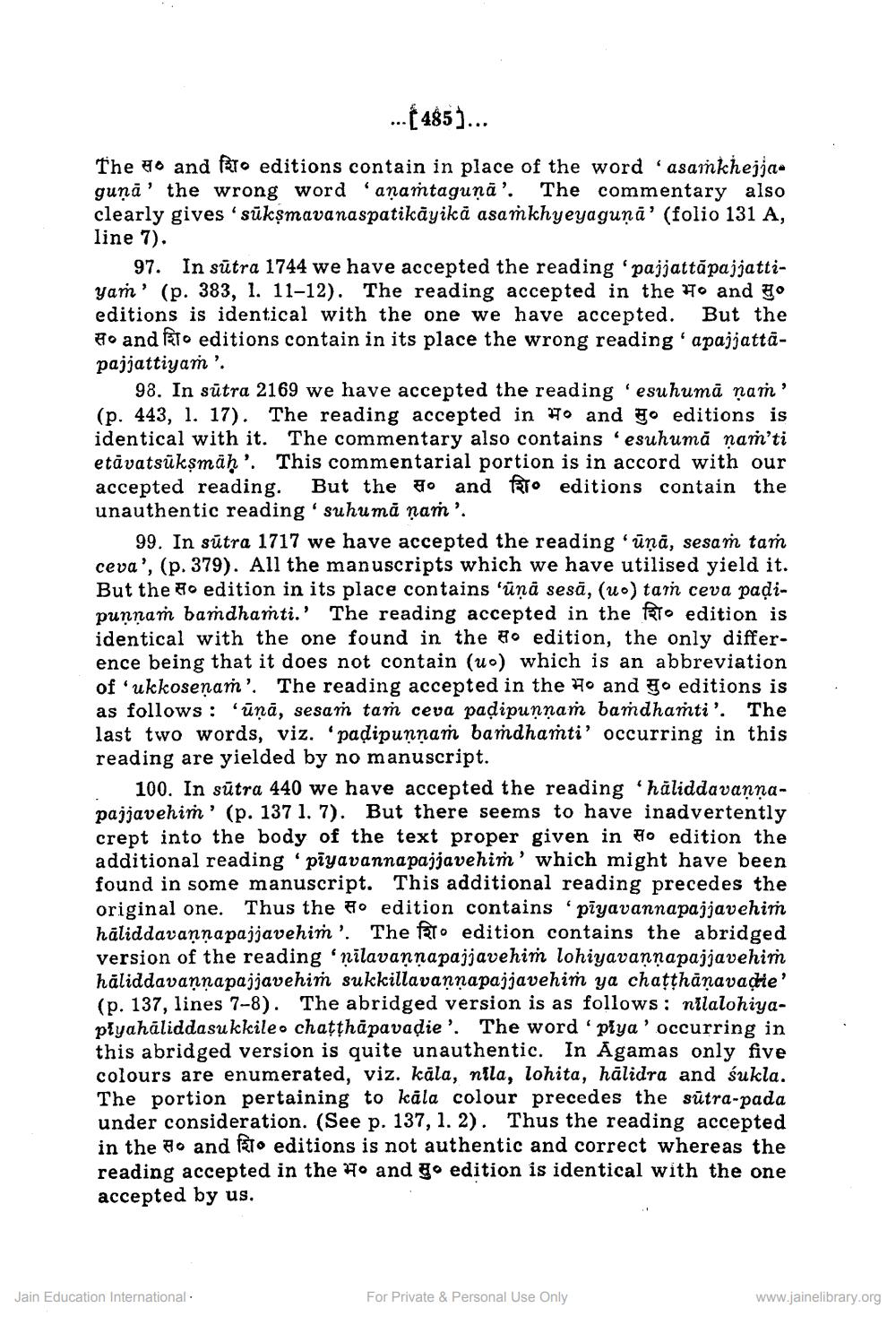________________
... 485)...
The # and Reto editions contain in place of the word 'asamkheijaguņā' the wrong word 'anamtaguna'. The commentary also clearly gives 'sūkşmavanaspatikāyikā asamkhyeyaguna' (folio 131 A, line 7).
97. In sūtra 1744 we have accepted the reading 'pajjattāpajjattiyam' (p. 383, 1. 11-12). The reading accepted in the Ho and go editions is identical with the one we have accepted. But the # and feto editions contain in its place the wrong reading' apajjattapajjattiyan'.
98. In sūtra 2169 we have accepted the reading 'esuhumā nam (p. 443, 1. 17). The reading accepted in Ho and yo editions is identical with it. The commentary also contains 'esuhumă nam'ti etávatsūksmah'. This commentarial portion is in accord with our accepted reading. But the yo and FTO editions contain the unauthentic reading suhumā nam'.
99. In sūtra 1717 we have accepted the reading “ūnā, sesam tam ceva', (p. 379). All the manuscripts which we have utilised yield it. But the edition in its place contains 'ūnā sesā, (u) tam ceva padipunnar bamdhamti.' The reading accepted in the TO edition is identical with the one found in the ho edition, the only difference being that it does not contain (u) which is an abbreviation of ukkosenam'. The reading accepted in the Ho and yo editions is as follows: 'ūņā, sesam tam ceva padipunnañ bamdhasti'. The last two words, viz. 'padipunnam baṁdhaṁti' occurring in this reading are yielded by no manuscript.
100. In sūtra 440 we have accepted the reading "häliddavannapajjavehim' (p. 137 1. 7). But there seems to have inadvertently crept into the body of the text proper given in Wo edition the additional reading piyavannapajjavehim' which might have been found in some manuscript. This additional reading precedes the original one. Thus the #o edition contains pīyavannapajjavehim haliddavannapajjavehim'. The foto edition contains the abridged version of the reading 'nilavannapajjavehim lohiyavannapajjavehim haliddavannapajjavehiṁ sukkillavannapajjavehi ya chatthanavaçie' (p. 137, lines 7-8). The abridged version is as follows: nilalohiyapiyahāliddasukkile. chatthāpavadie'. The word 'plya' occurring in this abridged version is quite unauthentic. In Agamas only five colours are enumerated, viz. kala, nila, lohita, hālidra and sukla. The portion pertaining to kāla colour precedes the sūtra-pada under consideration. (See p. 137, 1. 2). Thus the reading accepted in the Ho and to editions is not authentic and correct whereas the reading accepted in the Ho and go edition is identical with the one accepted by us.
Jain Education International.
For Private & Personal Use Only
www.jainelibrary.org




